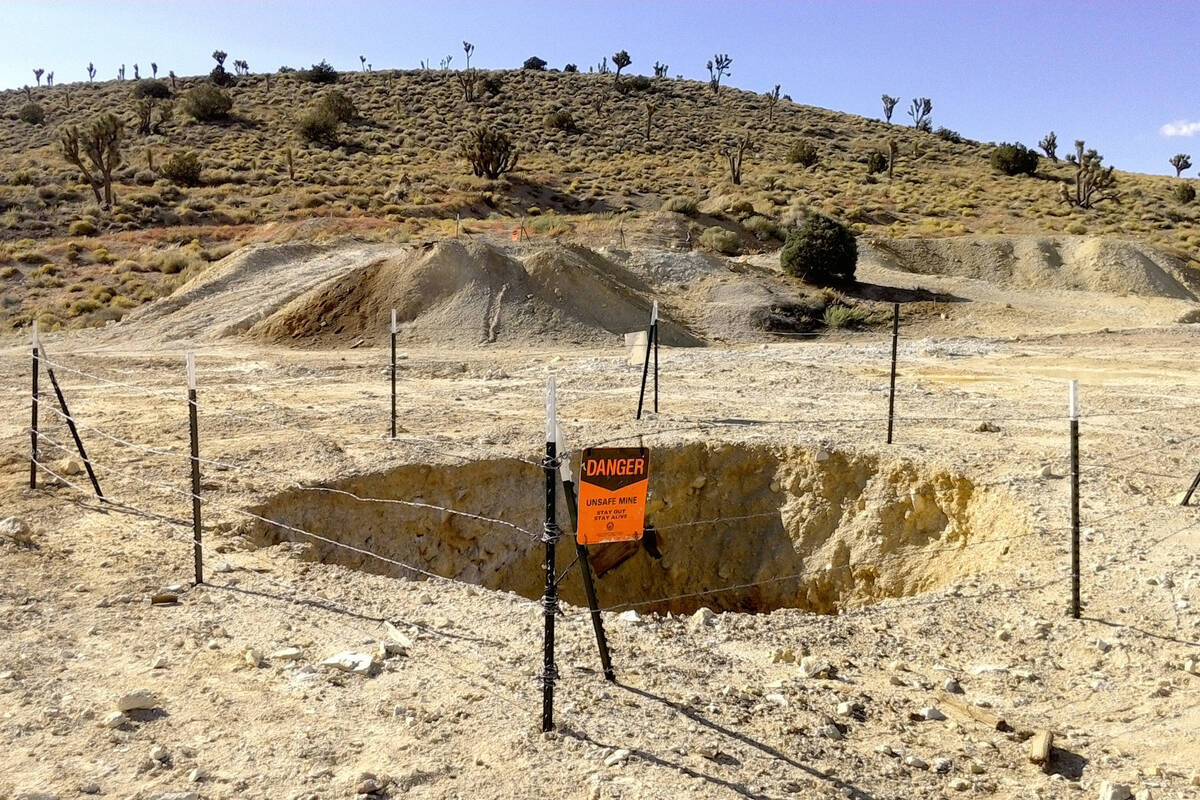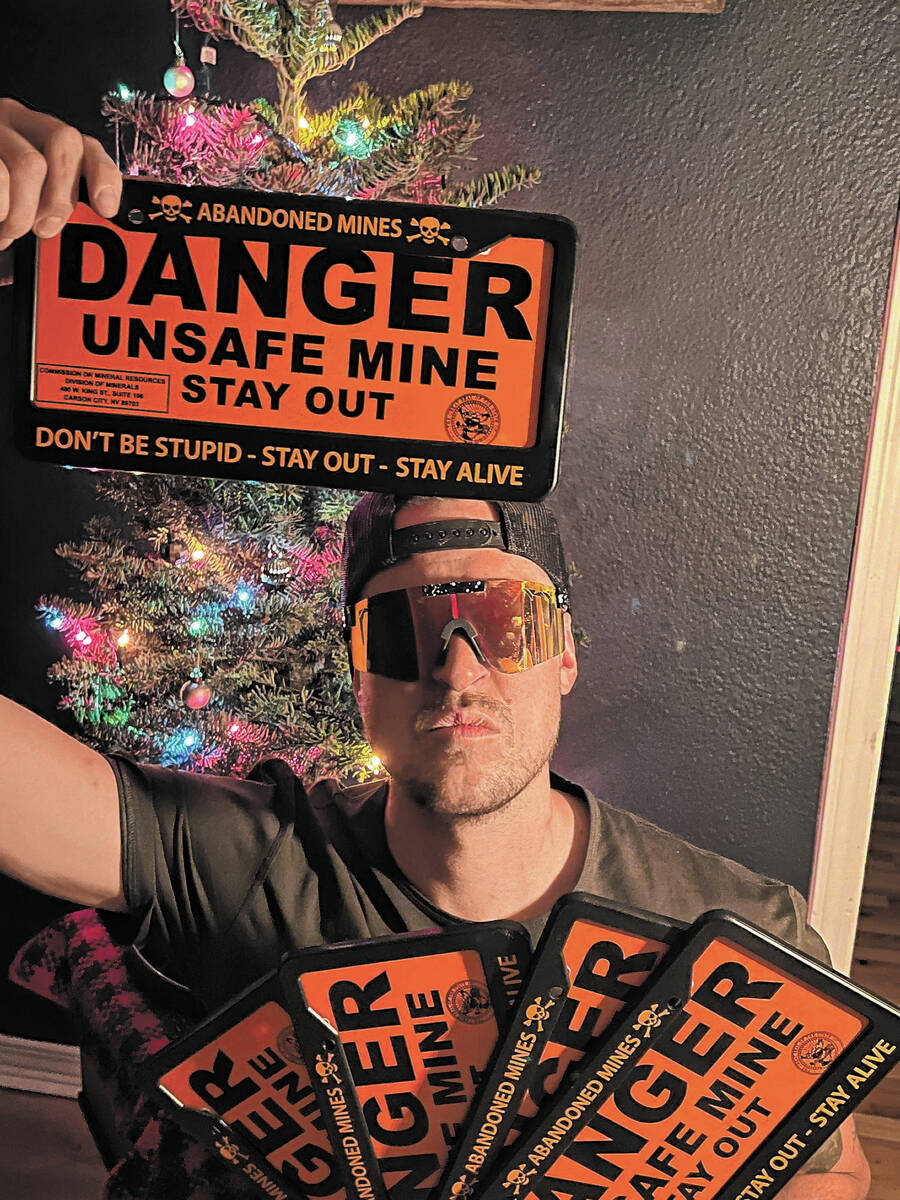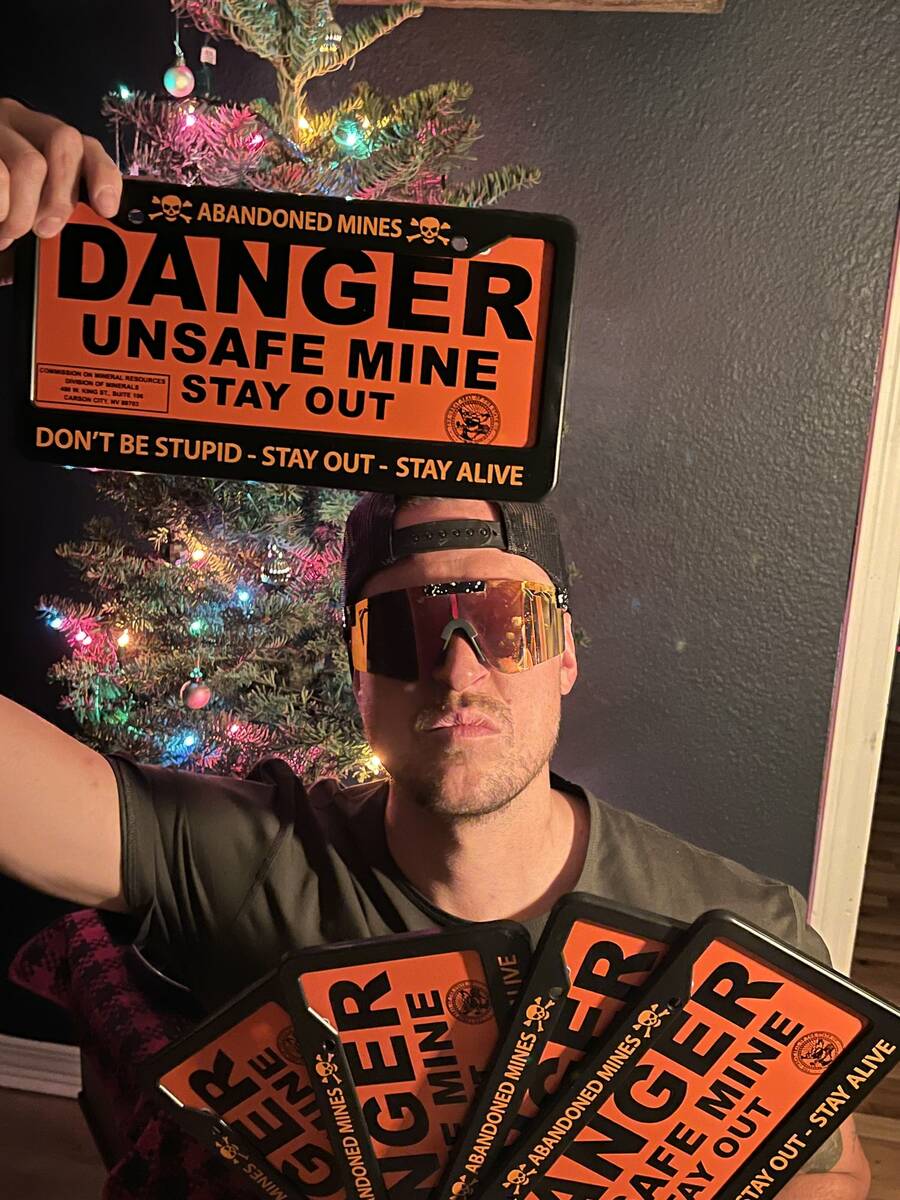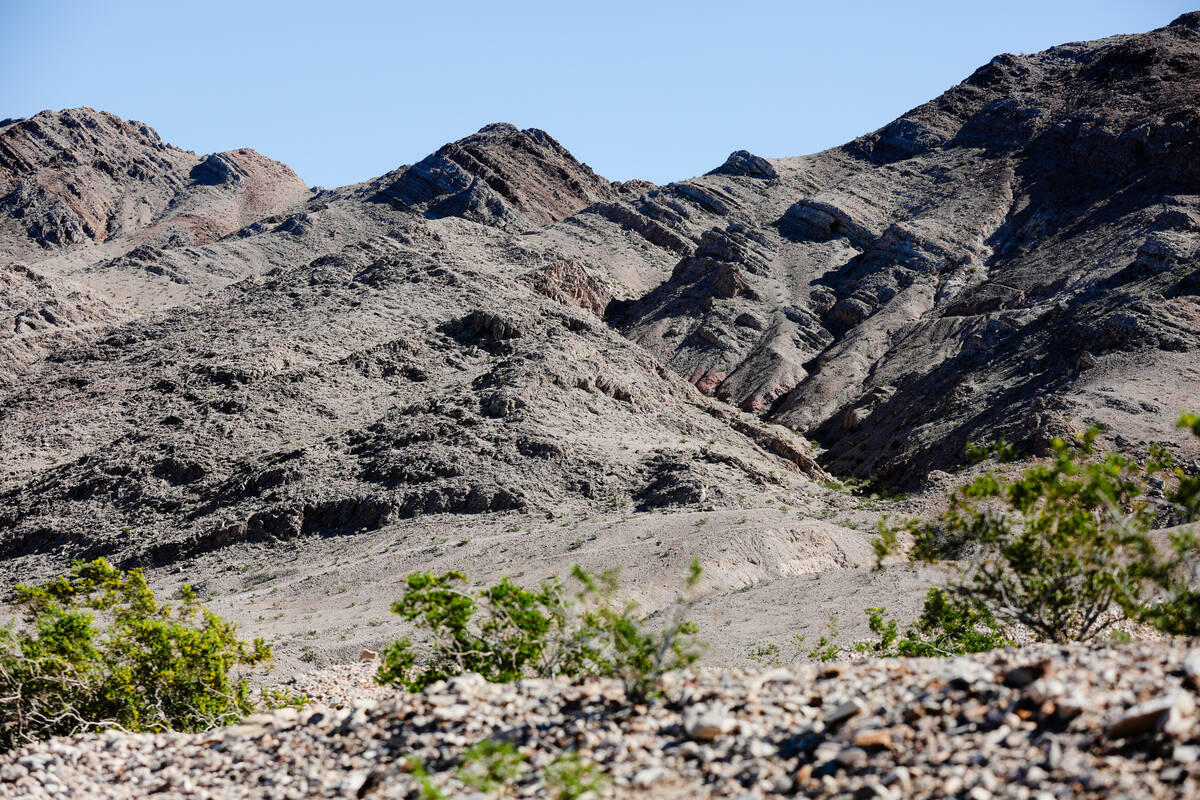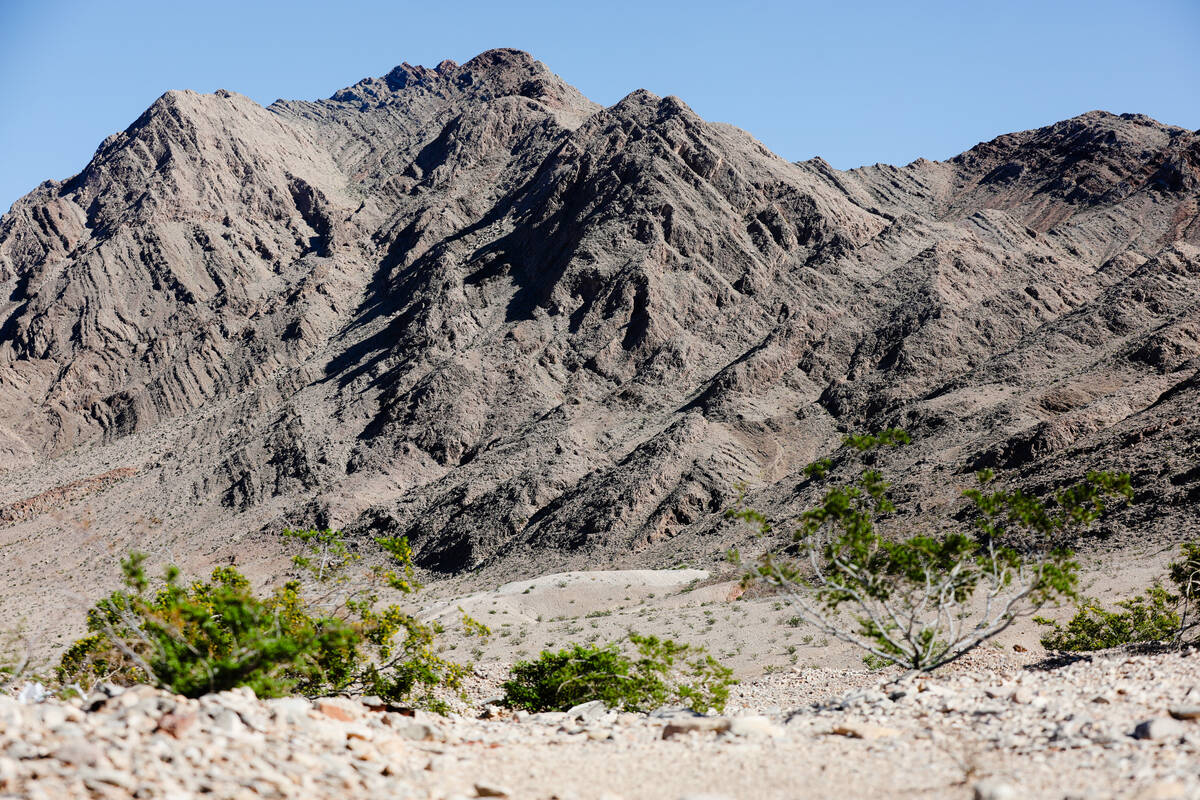All the ways a mine can kill you: Nevada’s abandoned mines pose endless risks
Nevada is home to more than 300,000 abandoned mines — mines that can kill you in an almost unimaginable number of ways.
But those mines from Nevada’s olden days are attracting a modern-day problem for state and federal officials in charge of taking care of those death traps: vloggers and YouTubers.
Interest in abandoned mines has spiked in recent years, according to Sean Derby, chief of Nevada’s abandoned mine lands program with the state Division of Minerals. Part of that has been driven by increased access as off-road vehicles and ATVs have become more popular. But online influencers filming themselves delving into the mines also has played a significant role, Derby said.
Most of the mine divers aren’t from Nevada, where the state for decades has gone into schools to educate kids about the dangers that abandoned mines hold, Derby said.
“What we’re seeing now though is a new generation coming from all over the place who see mines as a hobby,” Derby said.
But with a backlog of literally hundreds of thousands of mines that need to be secured, putting up barriers around all of them is a nearly impossible task. So mining officials are leaning more into social media themselves in hopes of meeting that audience on their own level.
Abandoned mines across the Silver State
With a nickname like the Silver State, it’s little wonder that Nevada’s mining lore dates back to even before the state joined the union in 1864.
That history has left its mark, too. An estimated 300,000 abandoned mines are spread across the state, a number that is based on historical U.S. Geological Survey data.
State officials have visited about 25,000 mines over the years, with about 20,000 of those being “secured,” meaning that some sort of closure was put in place, such as a fence around the mine opening. Derby said the state division visits about 2,000 to 3,000 sites each year, ever so slowly trying to chip away at that monstrous backlog.
Even the sites that have been secured still need to be revisited about every five to 10 years, which only piles on, he added.
“There’s a never-ending rotation of sites you have to check for quality control,” Derby said.
Securing the sites is sometimes only a temporary fix, said John Callan, the abandoned mine lands program lead for the Bureau of Land Management in Nevada. People cut holes through the fences, rip off signs and some have even used excavators to open mine shafts that the state closed off.
Many of those hobbyist mine delvers aren’t properly trained and don’t have the needed equipment, he added, which only adds to their risks.
“You can put all the signs you want, but humans are humans,” Callan said.
Callan said that if people happen to come across an unsecured mine while out hiking or riding around Nevada’s rural areas, they should take photos of the area and, if possible, jot down the GPS coordinates and report it to the Division of Minerals.
All the ways a mine can kill you
Educating the public about the dangers posed by abandoned mines has been a top priority for the Division of Minerals for decades.
And there are many, many ways a mine can kill you.
Falling dozens or even hundreds of feet down a mine shaft seems the most obvious. There’s also the fauna — a deadly rattlesnake, a sleeping mountain lion, a rabid bat — and even the chance you kick up dust containing feces particles from mice that could be carrying hantavirus, a severe lung infection that can kill you in a matter of days.
Further down things can get even weirder.
You might run into explosives or chemicals that have been sitting for decades, decomposing and becoming more and more unstable as the years pass by.
The wood supports used in many mines slowly decay over time, a process that results in the release of gas. That can create pockets in the mines where there is no available oxygen at all, a situation that killed two men in a mine accident near Virginia City in 1996.
Since 1961, there have been 19 reported deaths in abandoned mines in Nevada, along with 24 injuries. Four dogs also have died in that time frame, while seven dogs have been rescued.
“A lot of things that can kill you, and it’s just something that can be avoided,” Derby said.
Based on the low number of people — and animals — being injured or killed in abandoned mine accidents over the years, though, the state’s education efforts seem to be paying off.
From 1990 to 2010, there were 36 recorded incidents in an abandoned mine in Nevada, 24 of which happened from 1990 to 1999.
Since 2011, though, there have been just five such incidents, according to state records, the most recent of which came in May 2020 when a dog fell down a mine shaft in Pershing County. It was rescued three days later.
But mine officials worry that the social media allure has made it harder to get that message in front of folks.
Derby said staff noticed that most of the division’s videos uploaded to YouTube would only get a few hundred views, if that. Meanwhile, videos that would come up next in the queue were often from those vloggers who filmed themselves going down into those mines, videos that generated millions of views.
That sparked an idea. What if the state created videos in that same style, but the actual content was classic “public service announcement”?
The end result was the birth of “Jimmy King, the king of bad ideas” – a character created in the same over-the-top style as those popular videos, but instead showing all the ways one can die in an abandoned mine.
One of the Jimmy King videos quickly became the division’s most viewed on the platform, nabbing nearly 25,000 views, and Derby said the division’s board has given them the green light to do another round of Jimmy King ads this year.
Derby wants people to be able to dig into Nevada’s rich mining history — but only in a metaphorical sense.
Contact Colton Lochhead at clochhead@reviewjournal.com.



